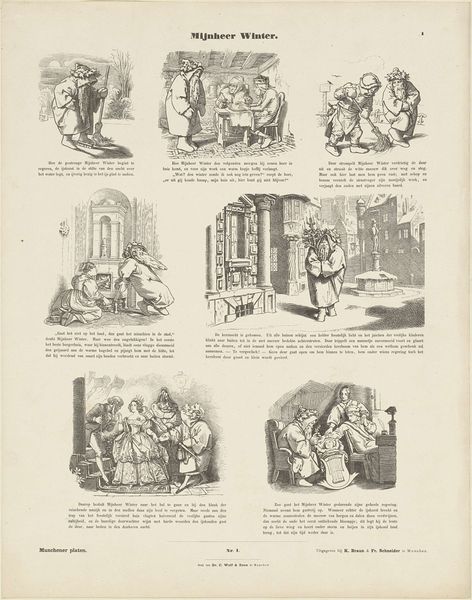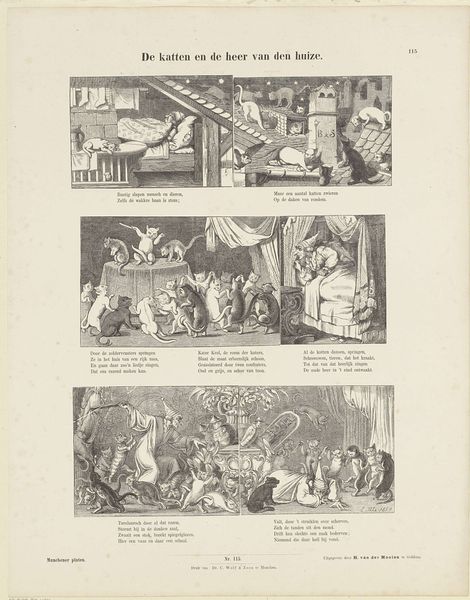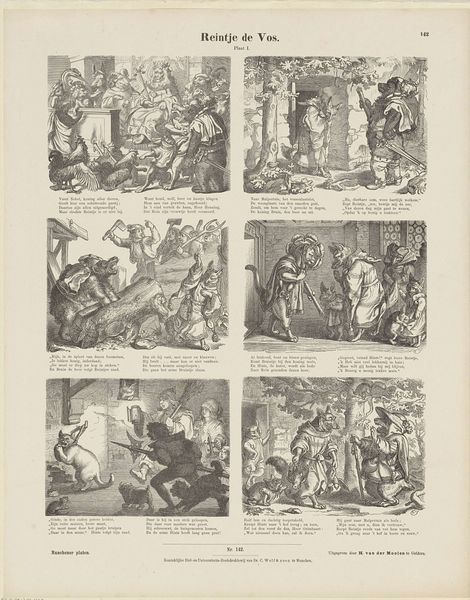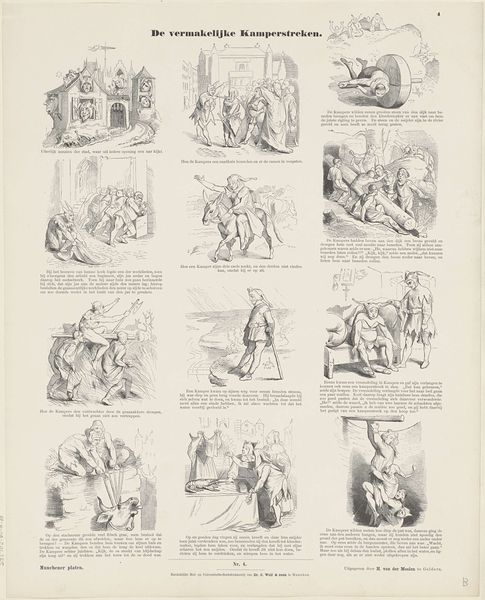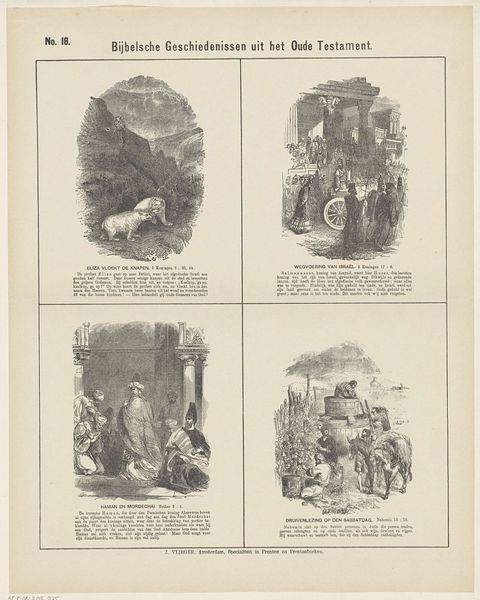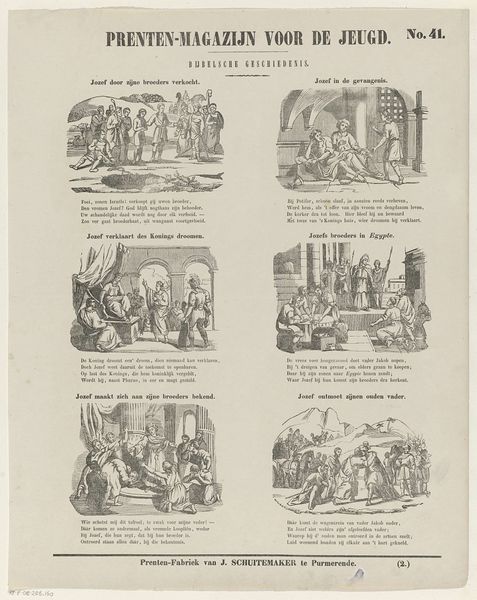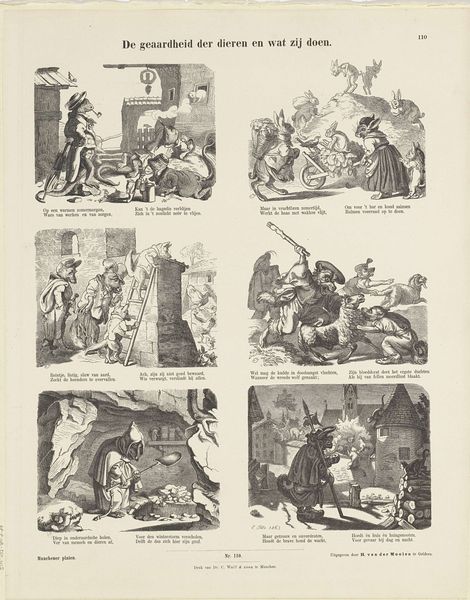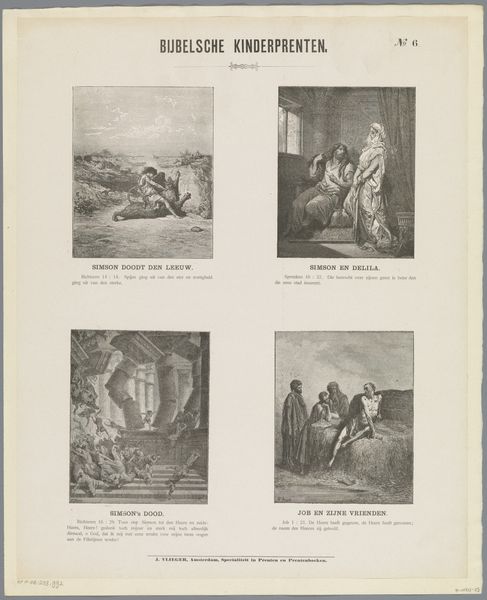
print, engraving
#
narrative-art
# print
#
genre-painting
#
engraving
Dimensions: height 442 mm, width 348 mm
Copyright: Rijks Museum: Open Domain
Editor: Here we have "Het bultenaartje," or "The Hunchback Girl," an engraving that dates approximately from 1843 to 1920, credited to E. Ille. It is a busy image with many vignettes depicting different scenes. It makes me think of sequential art, or a very early comic strip. How would you interpret a piece like this? Curator: Given the period and the form – a printed engraving consisting of several vignettes – I’d say this work speaks volumes about the evolving role of visual storytelling in mass culture. Think about how printmaking democratized art, taking it out of elite galleries and into homes. How does this engraving engage with themes of genre-painting and narrative-art? What story do you believe it is trying to tell? Editor: From the scenes shown, a woman helping a hunchbacked figure in several different contexts. Almost like acts of kindness in exchange for help or goodwill. The images tell a sequential story of a woman assisting the hunchback. Curator: Exactly. But look closer. Are there patterns? Each image is meticulously crafted, no? They showcase domestic labor, charity, and perhaps even societal expectations placed on women. Do these images offer a critical lens to that? Editor: Well, the scenes all focus on the woman's actions in various spaces: outdoors, inside a home, in a workshop...almost like her entire life revolves around these duties. If this work was made between 1843 and 1920, were gender roles a common artistic theme at that time? Curator: Certainly, and it’s essential to examine whose gaze and which social institutions frame this narrative. Understanding the history behind print culture—who commissioned these prints, who bought them, where were they displayed—deepens our appreciation for the political life of the image itself. Think about how the reception and interpretation may have varied across different audiences. Editor: This conversation makes me think a lot about accessibility of art. It seems like engravings made art more accessible, but they could also reinforce existing social structures. It’s something I had not thought about before. Curator: Indeed, and hopefully it sparks further reflection on who gets to tell stories and what agendas they serve.
Comments
No comments
Be the first to comment and join the conversation on the ultimate creative platform.
